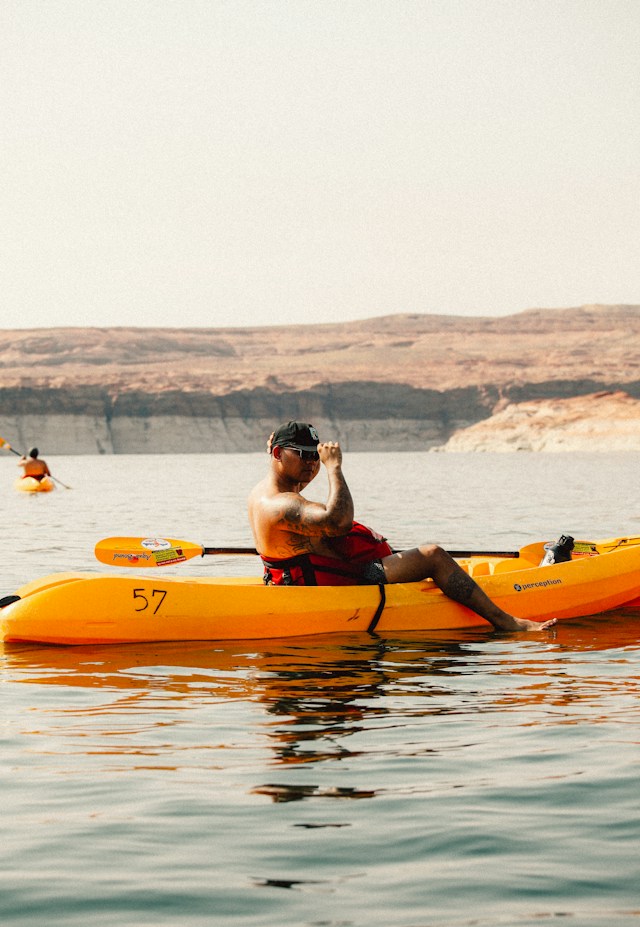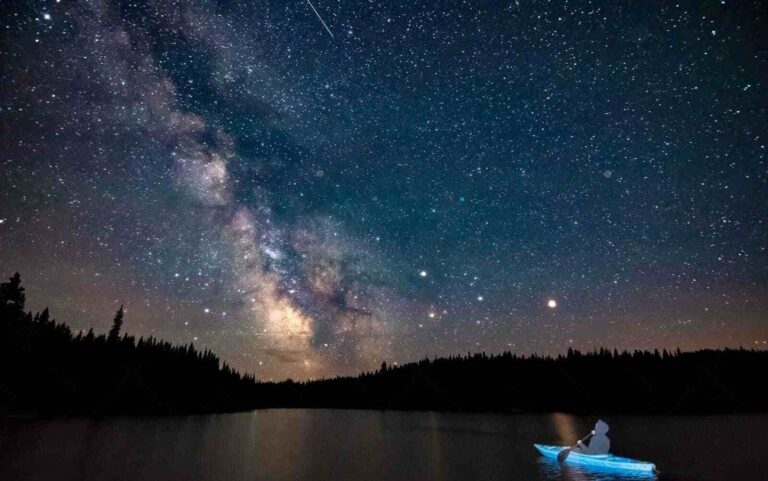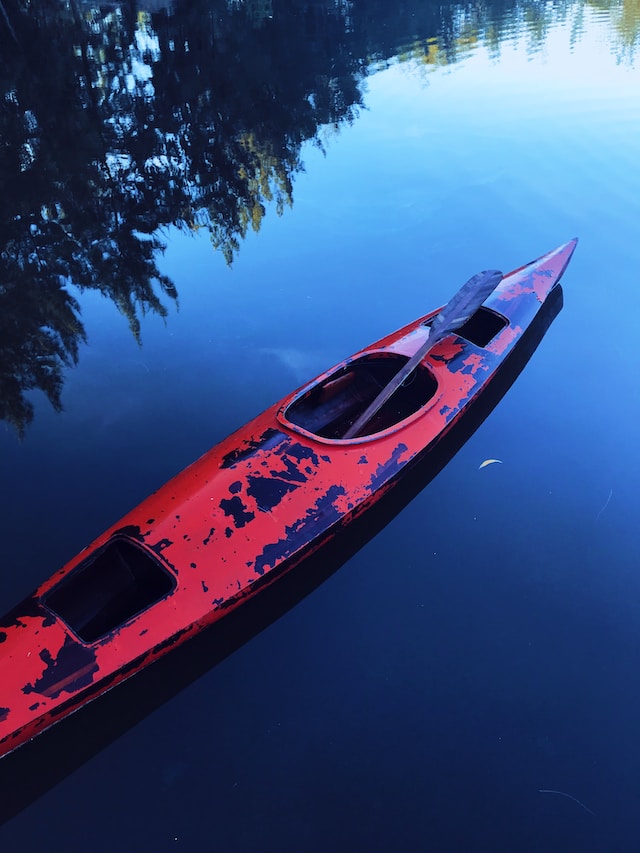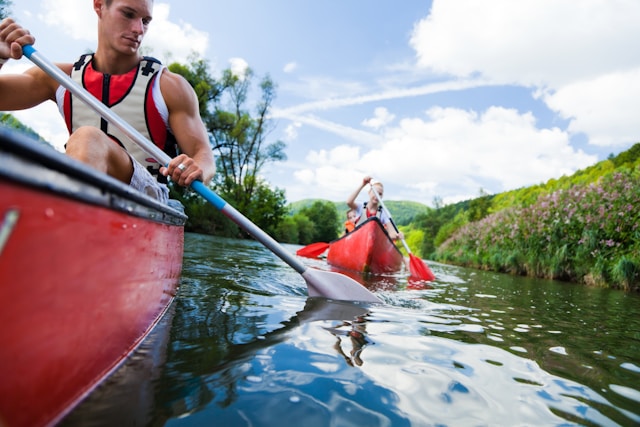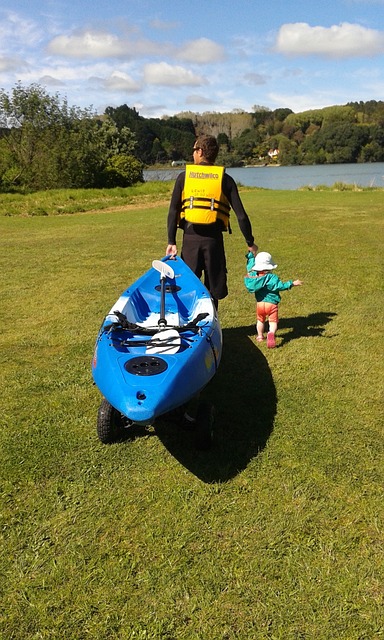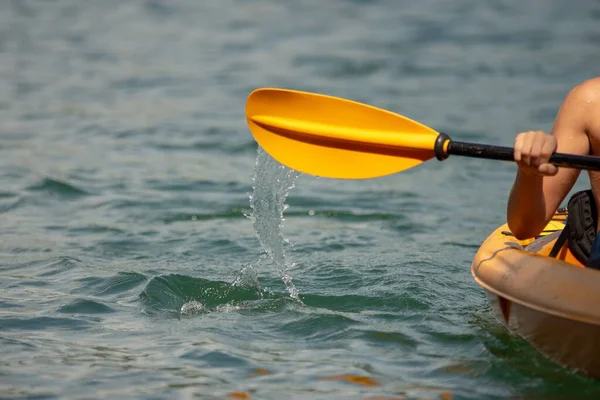The History and Evolution of Kayaking as a Water Sport
Did you know that kayaking has a history that spans thousands of years?
Imagine a kayak is like a fancy shoe. Just like you have shoes for running, dancing, or hiking, there are different kinds of kayaks with different weights, depending on what you want to do with them!
Kayaks weren’t invented for fun – they were how people in super cold places found food! Thousands of years ago, Arctic hunters built them out of animal skins and bones. They had to be light to zoom around in the icy water.
Later, people in other parts of the world fell in love with kayaking. They used them for exploring and even relaxing on the water.
Over time, we got better at making things, so kayaks weren’t made from animal skins anymore, but strong stuff like fiberglass! Now we even have folding kayaks you can carry in a backpack – how cool is that?
Today, kayaking isn’t just about having fun (although that’s a big part of it). People RACE in kayaks! It’s even in the Olympics, with different kinds of races to show how fast and skilled kayak athletes are.
Kayaks have come a loooong way! From helping people find food, to exploring adventures, to even being in the Olympics – it’s been a wild ride. Who knows what the future of kayaks holds?
Key Takeaways:
- The origins of kayaking can be traced back to the indigenous Inuit and Aleut people of the Arctic region, who used kayaks for hunting and transportation.
- European adoption of kayaking in the mid-1800s led to further design influences and the use of kayaks for recreational purposes.
- The development of kayak materials, from animal skins to fiberglass and polyethylene, revolutionized the sport’s design and durability.
- Kayaking became a formalized competitive sport with the inclusion of kayak racing in the Olympic Games in 1936.
- The cultural influence on kayaking’s popularity is evident in different regions, where local traditions and natural resources shape the way kayaking is practiced.
Tracing Kayaking’s Inuit Origins
The Birth of Kayak: Inuit Ingenuity
The origins of kayaking can be traced back to the indigenous Inuit and Aleut people of the Arctic region. Approximately 5,000 years ago, these resourceful tribes crafted the first kayaks using materials readily available to them.
The Inuit and Aleut people ingeniously utilized animal skins, bones, and wood to construct lightweight and agile vessels perfectly suited for their hunting and transportation needs.
Ancient Kayak Designs: Materials and Purposes
Forget fancy factories! The Inuit and Aleut people were like super resourceful MacGyvers, building awesome kayaks with whatever they could find around them.
- Building with Nature: No stores back then! They used driftwood or even whale bones to make the kayak’s frame, like the skeleton. Then, they stretched animal skins over it, making it waterproof.
- Extra Waterproofing Tricks: They weren’t done yet! To make the kayaks even better, they’d rub in whale fat, making the skin extra slippery in the water. They even added blown-up seal bladders to help the kayak float!
These ancient kayakers were incredibly clever. They knew exactly what they needed to survive in a tough environment, and turned it into awesome tools for exploring and finding food.
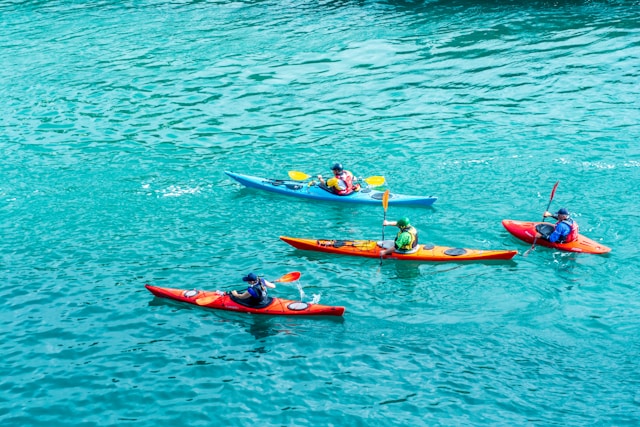
Ancient Kayak Purposes
Kayaks weren’t just for fun back then – they were like the difference between eating or going hungry! Imagine the Inuit and Aleut people zipping across the water in their super-fast, quiet kayaks, sneaking up on seals, whales, and birds for food.
These kayaks were their lifelines. They could go wherever they needed for food, even in icy waters. This shows how smart and tough those ancient people were, using everything they had to survive in a harsh world.
| Ancient Kayak Materials | Ancient Kayak Purposes |
|---|---|
| Animal skins (seal hides) | Hunting |
| Wood (driftwood or whalebones) | Transportation |
| Whale fat (for waterproofing) | |
| Seal bladders (to increase buoyancy) |
Kayaking Transitions from Survival to Recreation
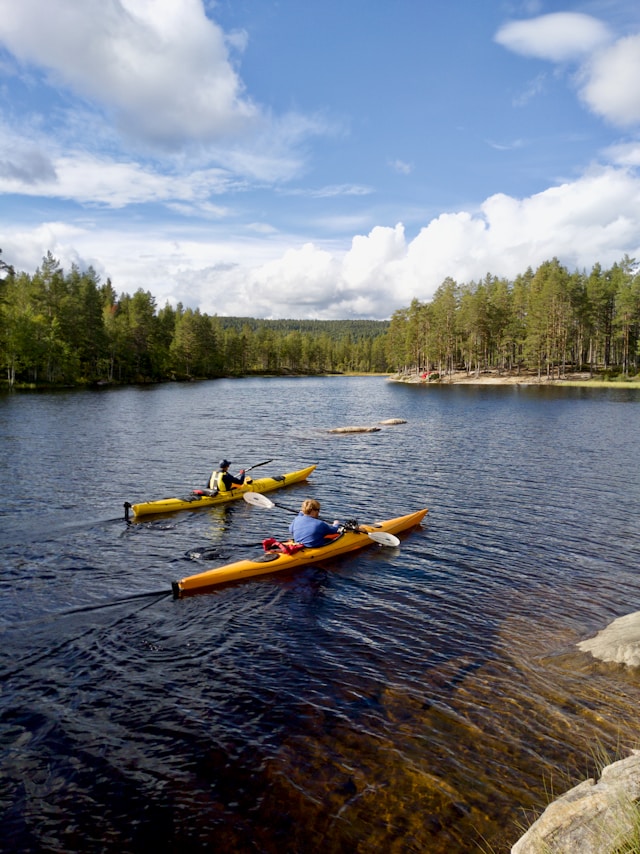
Picture this: it’s the 1800s in Europe, and nobody’s ever seen a kayak before. Then, explorers come back from the Arctic with stories of these amazing boats that people use to zip around on the water. The Europeans are like, “Whoa, what is THAT?!”
Soon, people in Europe couldn’t get enough! They realized how fun kayaks could be, not just for finding food, but also for exploring and racing each other. Germans and French kayakers were some of the very first!
It’s funny though – while Europeans were discovering how awesome kayaks were for fun, the tribes who invented them still needed them for everyday survival. Kayaks really show how the same thing can be used in different ways!
European Adoption and Design Influence
The European adoption of kayaking brought about its own design influences. Europeans introduced their own ideas and modifications to kayak design, incorporating features that enhanced the recreational experience.
These design influences, combined with the expertise of indigenous Arctic peoples, helped to further refine and develop the kayak as a recreational watercraft.
From Hunter’s Boat to Sport Equipment
Forget hunting seals for a sec! Kayaks got a whole new makeover, going from tough explorer gear to sleek racing machines. This was a game-changer for kayaks!
Europeans started focusing on how to make kayaks even faster, and better at turning quickly. They were all about races and exploring new places with their kayaks.
This was like the kayak getting a cool upgrade! It went from being an awesome survival tool to a super fun sport that people all over the world would eventually enjoy.pen_sparktunesharemore_vert
Related Content:
- 9 Eco-Friendly Practices In Kayaking
- What Is The Difference Between Kayaking And Canoeing?
- How To Kayak At Night? A Simple Guide
- How Many Calories Does Kayaking Burn? – Find Out Here!
The Innovation of Kayaking Equipment through History
Throughout history, kayaking equipment has seen significant innovations and advancements. One notable evolution is the development of kayak materials.
Ancient kayaks were constructed using animal skins, bones, and wood, providing lightweight yet less durable vessels.
Evolution of Kayak Materials: From Skins to Synthetics
Imagine kayaks stuck in animal skins – totally old-school! Then, BAM! Scientists invent crazy-strong, lightweight materials, and kayaks get an epic makeover!
- Enter Fiberglass: It’s like giving your kayak super strength! These kayaks could crash into stuff way harder without breaking.
- Plastic Power: Kayaks used to be expensive, but then came plastic! Suddenly, way more people could afford them, and they lasted even longer out on the water.
This materials revolution means kayaks aren’t just for serious explorers anymore, they’re for anyone who wants a fun day out on the water!
Folding Kayaks and the Advent of Modern Design
In the 1920s, a German inventor named Johann Klepper came up with folding kayaks! This was a game-changer. Imagine being able to shove your kayak in a bag and take it anywhere – no more roof racks needed!
Suddenly, you could take your kayak on adventures way further from home! This changed everything about how people thought about kayaks. Designers were like, “Okay, if we can make them fold, what ELSE can we make them do?” leading to even cooler, better kayaks over time.
| Kayak Material | Advantages |
|---|---|
| Animal Skins, Bones, and Wood | Lightweight |
| Fiberglass | Greater strength Improved durability |
| Polyethylene Plastics | Affordability Long-lasting |
Please create a table similar to the one above.
Kayaking As a Formalized Competitive Sport
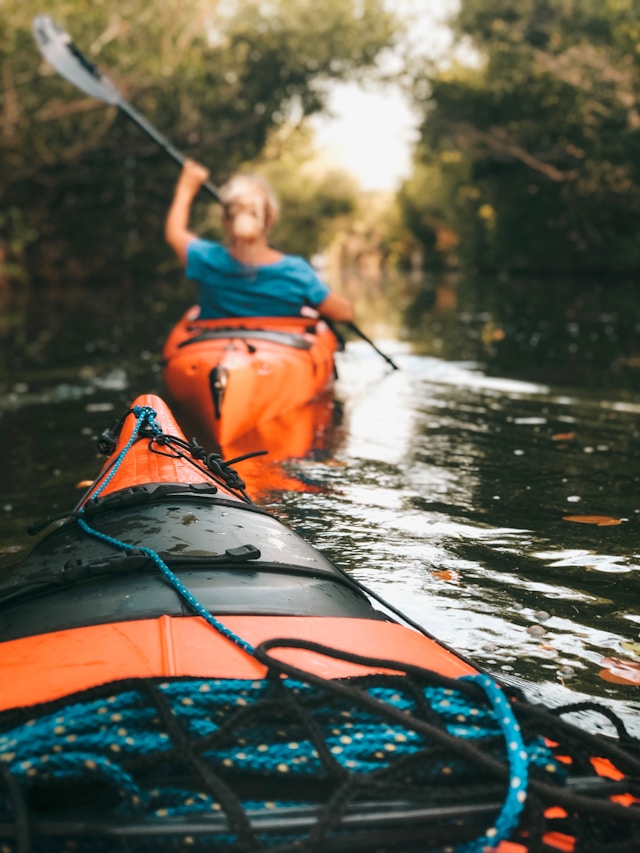
Kayaking went from a way to find food… to an Olympic sport! How crazy is that? It all started in the 1936 Olympics, where kayak racing was shown off for the first time.
Now, kayaking is a major Olympic event! There are all kinds of races:
- Sprint Races: It’s all about speed! Who’s the fastest kayaker out there?
- Slalom Races: Think obstacle course on the water! Paddlers have to twist and turn through gates.
- Freestyle Kayaking: Like doing skateboard tricks on water! Kayakers spin and flip for points.
It takes serious guts and skill to be a competitive kayaker! It’s a super cool sport, whether you just want to have fun or go all the way to the Olympics.
| Discipline | Description |
|---|---|
| Sprint Kayak Racing | Involves racing over flatwater courses, with competitors paddling as fast as possible to reach the finish line. |
| Slalom Racing | Features a challenging course with gates that athletes must navigate through while maneuvering through fast-flowing rapids. |
| Freestyle Kayaking | Showcases the acrobatic and creative skills of kayakers as they perform tricks, flips, and maneuvers on river features like waves and holes. |
| Marathon Racing | Involves long-distance races, typically over rivers or lakes, requiring endurance and strategic navigation. |
Global Expansion: Kayak Sport Heritage and Culture
Kayak Racing: From Olympic Debut to Global Event
Imagine kayaking being like a cool secret club – awesome, but not many people knew about it. Then, boom! Kayak racing hits the Olympics and the whole world gets hooked!
Kayaking used to be about finding food or exploring new places. Now? It’s a full-on international obsession with fans cheering all over the planet. Talk about a glow-up!
It all started back in 1936 – kayak racing was just a demonstration sport at first, but that changed everything. It was like a signal that kayaking was about to become a big deal.
Today, Olympic kayak races are seriously intense! They’re all about insane speed, crazy skills, and athletes pushing themselves to the limit. Kayaking’s journey from a little-known sport to the Olympic stage is proof that anything is possible!
The Cultural Influence on Kayaking’s Popularity
Okay, imagine kayaks are like shoes. You have different types for different things, and some feel heavier than others, right? Let’s dive in!
Kayaking Around the World
Get this: kayaking isn’t the same everywhere! In places with lots of ocean history, like Norway and New Zealand, sea kayaking is HUGE. They love exploring those coastlines with whales and stuff!
But switch to a place like Costa Rica, with crazy waterfalls and rivers? Boom, it’s ALL about whitewater kayaking! That’s for super adventurous paddlers who love a wild ride.
The Secret Kayak Club
The coolest part? Kayakers everywhere are like one big team! They share secrets about awesome paddling spots and even travel together. That makes kayaking feel extra special, no matter where you are.
The Development of Kayaking Techniques and Safety Measures
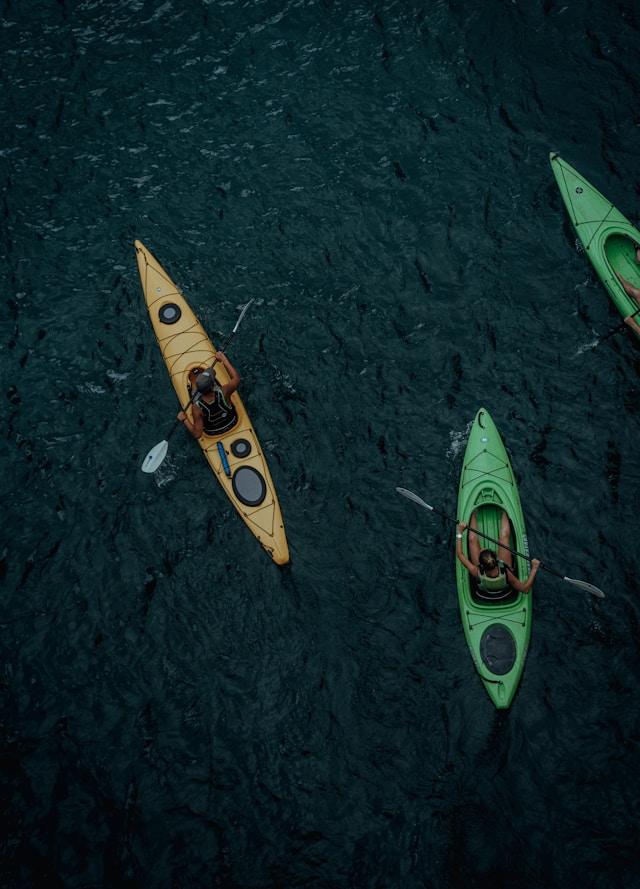
Mastering the Eskimo Roll: A Survival Skill
Ever take a tumble out of your kayak in the middle of the ocean? Not fun, especially in icy water! That’s why the Inuit people invented the Eskimo roll, a secret weapon to get themselves back upright in no time.
Think of it like magic: you’re underwater, everything’s upside down, and then WHOOSH, you and your kayak are right-side up again! It takes lots of practice and looks super cool when you get it right.
The Eskimo roll isn’t just about staying dry (although that’s important!). It’s about being in control of your kayak, even when things go wrong. You don’t even need help getting back up!
Progressions in Paddling: Techniques and Education
The Eskimo roll is just the beginning – think of all the cool ways you can move in a kayak! Paddlers are always figuring out new tricks to make themselves faster, smoother, and able to handle tougher water.
That’s why there are so many advanced ways to paddle. It’s about mastering tricky turns, crazy currents, and making your kayak dance on the water.
But here’s the thing: kayaking isn’t just about how cool you look. There are classes and training for everything! They teach you how to stay safe, what to do if things go wrong, and even how to help other paddlers.
The more you learn, the more you realize – kayaking is about way more than just splashing around. You learn to read the water, respect nature, and be the best paddler you can be. That’s what makes it an awesome sport!
| Kayaking Technique | Description |
|---|---|
| Eskimo Roll | A maneuver used to right a capsized kayak without exiting the cockpit. Originated from the Inuit people as a survival skill. |
| Forward Stroke | The basic paddling stroke used for propulsion, involving a smooth and efficient movement of the paddle in the water. |
| Bracing | A technique used to maintain balance and stability by placing the paddle perpendicular to the water’s surface. |
| Edging | Tilting the kayak on its side to improve maneuverability and control while turning. |
Please make sure that the table is well-structured and visually appealing. Adjust the table design as necessary, but do not include any fictional names or irrelevant data.
The History and Evolution of Kayaking as a Water Sport
Timeline: Key Moments in Kayaking History
Kayaks started out as a way for Arctic people to survive, and now they’re in the Olympics! Think about how CRAZY that journey is! Here’s the short version:
- The Beginning: Thousands of years ago, people in the Arctic needed a way to hunt on the icy water. Enter the kayak!
- Kayaks Go Global: Europeans saw these amazing boats and were like, “Whoa, we need those!” Kayaking started to spread as people realized it was fun, not just for survival.
- Olympic Dreams: Fast-forward to 1936, and kayak racing becomes an Olympic sport. That’s when kayaking REALLY took off as a worldwide thing!
The timeline of kayaking history includes:
| Year | Event |
|---|---|
| 3000 BCE | The Inuit and Aleut people craft the first kayaks using animal skins, bones, and wood. |
| Mid-1800s | Kayaks make their way to Europe and are adopted for recreational purposes, introducing new design influences. |
| 1936 | Kayak racing is included as a demonstration event in the Berlin Olympic Games, marking the formalization of kayaking as a competitive sport. |
| Present | Kayaking continues to evolve, with advancements in kayak design and customization, as well as a growing interest in recreational and touring kayaks. |
Kayaking Today: Trends and Future Directions
Kayaks are getting cooler all the time! Here are some awesome trends shaping the way we paddle:
- Build Your Perfect Kayak: It’s like designing your own awesome shoes! Now you can pick kayaks based on exactly how you like to paddle, from super-fast racers to comfy floaters.
- Kayaking for Everyone: Forget just athletes! More and more people want kayaks for chilling out, seeing cool places on the water, and having adventures.
- What About Tomorrow? Imagine kayaks that are even lighter or fold even smaller! Or maybe kayaks made from recycled stuff to help the planet. The future of kayaking is all about awesome new tech that makes it even more fun and helps the environment.
Modern Kayaking: Trends, Technology, and Types of Kayaks
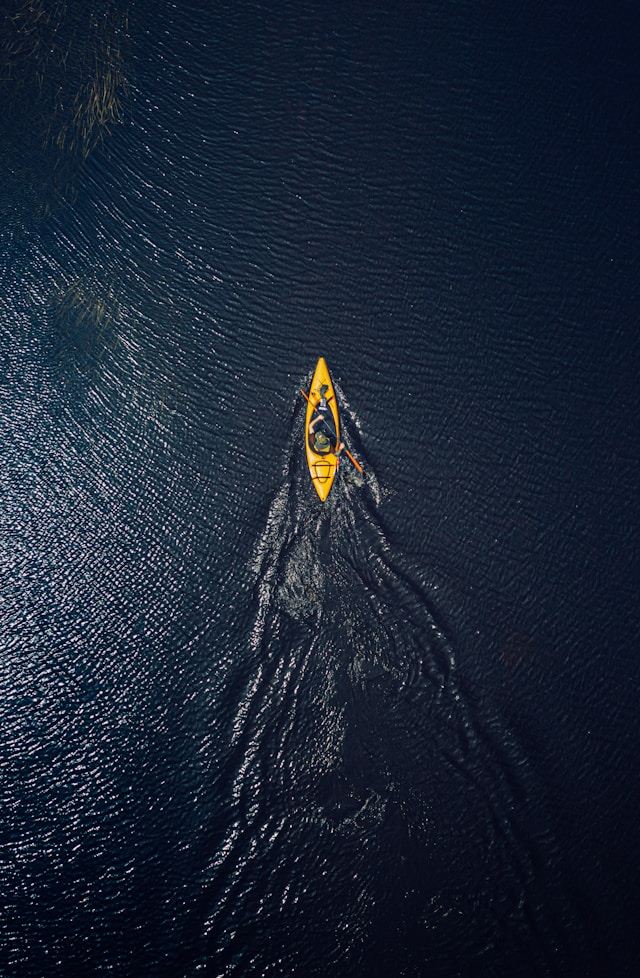
Get ready, because kayaking isn’t what it used to be! Here’s how things are changing for the better:
- Kayaks, Your Way: It’s like building your own dream machine! Want to go lightning-fast? Race someone? Relax on a lake? There’s a perfect kayak out there for it, with all sorts of cool features.
- Exploration Explosion: Kayaking isn’t just about racing anymore. People are discovering how awesome it is to chill on the water and explore amazing places. Kayaks are being made for every kind of adventure!
This is just the beginning. Imagine what kayaks might look like in a few years! The future is bright for anyone who loves to paddle.
Advancements in Kayak Design and Customization
You can now design the PERFECT kayak for exactly how YOU want to paddle! Here’s why that’s awesome:
- Space-Age Materials: Forget old, heavy kayaks! Now they’re made out of super-light, strong stuff used in spaceships! This means faster turns, easier carrying, and kayaks that last longer.
- Kayaks for Every Adventure: Wanna go super-fast? Explore a hidden cove? Chill out on the lake? There’s a specially-designed kayak out there for you.
- Make It Yours: Think comfy seats, secret storage spots, and all the little gadgets you need for your favorite type of paddling. It’s like your kayak is built just for you!
Kayaking is all about having fun on the water, and these new designs make it even better.
The Surge of Recreational and Touring Kayaks
Kayaking isn’t just for hardcore athletes anymore! Check this out:
- Chill-Out Kayaks: These are perfect if you just want to relax. They’re super stable (hard to tip over!), have comfy seats, and even places to stash snacks! Great for beginners, families, or anyone who wants to enjoy a peaceful day on the water.
- Explorer Kayaks: Ready for a longer trip? These are built to go the distance! They’re fast, track super straight, and have tons of storage room for camping gear or whatever you need.
The amazing thing is there’s a perfect kayak out there for whatever your dream adventure is – from a lazy afternoon float to exploring a coastline for days!
| Kayak Type | Features | Intended Use |
|---|---|---|
| Recreational Kayaks | Wide Hull, Comfortable Seating, Ample Storage Space | Casual Paddling, Family Outings, Beginner-friendly |
| Touring Kayaks | Narrow Hull, Sleek Design, Advanced Tracking Systems | Longer Journeys, Exploration, Coastal Paddling |
Conclusion
Kayaking started as a way to find food, and now it’s a worldwide sport! Here’s why that story matters:
- Kayaking Around the World: Different cultures have unique kayaking traditions. This makes it more than just a sport – it’s part of how people see the world.
- Protecting the Past, Building the Future: We can’t forget where kayaking came from! By teaching its history and keeping it safe and fun, the sport can grow even stronger and reach new people.
- What’s Next?: Imagine kayaks that go even faster, or fold up tiny to take on amazing adventures! The future is bright – as long as we remember that kayaking is all about being out in nature, pushing yourself, and having a blast.
Let’s make sure kayaking’s amazing journey continues, inspiring new paddlers and respecting the ones who came before!
Frequently Asked Questions
What is the history of the sea kayak?
Sea kayaks have an epic history! Thousands of years ago, they were how people living near the ocean got stuff done – finding food, moving around, the works!
Fast-forward to the 1900s, and people realize sea kayaks are also super fun! Now, they’re built for exploring, going fast, and even rough water.
Here’s the thing: sea kayaks are a perfect mix of old-school toughness with modern tech, letting you experience the water like people have for generations!
What is kayaking water sport?
Imagine gliding across the water in your own little boat – that’s kayaking! Here’s the lowdown:
Go Anywhere: Lakes, rivers, even oceans if you’re daring!
Your Way: Want a workout? Race your friends? Or just chill and watch wildlife? There’s a way to do it in a kayak.
Teamwork or Solo: Paddle with a buddy, or explore on your own!
The best part? You get amazing views you won’t find on land. Kayaking is all about fun, nature, and finding your next adventure.
Who discovered kayaking?
Kayaking wasn’t invented for fun! Imagine living in a place covered in ice and snow. That’s what it was like for the Inuit and Aleut people, and they needed a way to find food and get around.
Enter the kayak! They made these awesome boats out of animal skins and wood. Think how tough you have to be to paddle a handmade boat through icy water, hunting seals! These early kayakers were seriously amazing.
How old is kayaking?
Kayaking is incredibly old! Here’s the breakdown:
At least 5,000 years old: Archaeologists have found the oldest kayaks in the Arctic regions of North America. These belonged to the Inuit and Aleut people and were used for hunting and transportation.
Likely even older: There’s a possibility that kayaks were used even earlier in other parts of the world, maybe even as far back as 8,000 years! We might just not have found those yet.
So, while we can definitely say kayaking is thousands of years old, it could be even more ancient – that’s part of what makes it so cool!
What is the concept of kayak?
Kayaks aren’t your grandpappy’s fishing boats. We’re talking about tiny, awesome vessels that you power yourself with a paddle. Originally, they were a survival tool for folks living in icy places, but these days, they’re all about adventure! Kayaks are your gateway to secret coves, unforgettable wildlife encounters, and even a killer arm workout (if you’re feeling feisty).

